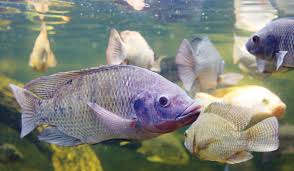Recommended Volume of Water for Fish Farming on a Concrete Pond
To be able to do well at fish farming in a concrete pond, which volume of water do you recommend? Sincerely speaking, as soon as your fishes are more than 1,000pieces in number, you will need a borehole to sustain them.
Well water may not be enough because you must always have enough water to pump into your pond as often as it is needed, either for regular change of water or in response to some emergencies that may necessitate change of water immediately.
How Much Water Should I Change for Fish Farming?
Opinion on this varies widely in the pond community, but one thing is pretty well agreed upon: in a healthy pond, a total water change should probably not be done.
A complete water change is a huge shock to the pond, and everything in the pond (fish, plants, bacteria, soil, algae) will suffer for it. Partial water changes are key. But how much water should you change out? Well, some pond owners say that up to 40 or 50% changes can be done without too much harm to the pond’s ecosystem. I’m much more conservative, though.
For my part, I’ve had plenty of hard lessons in how delicate a pond’s balances can be, so I recommend keeping it limited to 5 or 10% per week. Water testing can give you a much better idea of what your pond needs, though.
Pollutants should show up in the water quality tests that you should be doing already, and you should experiment and find the least amount of water change that you can do while still having the desired effect on the water quality.
If you find that your fish farming pond requires significant water changes to stay healthy, smaller water changes performed more often will almost certainly be less of a shock to your pond’s system.
Read Also: The Recommended Site for Sitting your Fish Farm
How do I do the water change for Fish Farming?
There are basically two parts to a partial water change.
1. Get the old water out
Getting the old water out is pretty simple, if not always easy. Some pond owners use a controlled overflow system that’s built into the pond, and this can be a really great way to get water out. It takes foresight when building the pond, though, and isn’t always practical.
You don’t need all of that, though. You can remove the water with a pump, a pump diverter on your existing pump, a shop vac or pond vacuum, or even just an old fashioned suck-on-a-hose-downhill syphon. I even get a good bit of the water that I change out of my pond out with a bucket, as I dip water out regularly to water other plants.
A quick note, again: evaporation doesn’t count as water changing, as it’s not the water itself that’s the problem, but the pollutants (which are left behind when water evaporates).
2. Add new water
This is the more complicated part. The biggest enemy for most pond owners in new water is Chlorine and its uglier cousin, Chloromine (of course, this may vary on how you get your water: well water often has more problems with sulfur).
The easiest way to avoid tap water problems is to avoid it altogether and depend on rain. The problem with rainwater is that it isn’t as reliable in most places. This problem can be partly diffused by harvesting rainwater, giving you a steadier supply of it when you’re ready for water changes.
Chances are, though, that you’ll have to rely on chlorinated water from time to time. If you stick to small water changes, though, chlorine shouldn’t be too much of a problem. It evaporates from water rather quickly, so it should be pretty much entirely gone from your pond in a day or so.
For larger water treatments, or if your tap water is treated with Chloromine (which is much like Chlorine, but stays in water longer), you might need to do more testing.
This may require either in-pond dechlorination treatment or pre-treating the water. I prefer pre-treatment, as I’m a big believer that, if I can avoid it, it’s better to not have a potentially harmful chemical in the pond in the first place.
Read Also: 8 Uses of Fish and Fish Products
In fish farming, changing your pond water is not just something you do for the sake of it. Changing water in ponds, just like in aquariums, is essential to the health and survival of the fish and the greater ecosystem.
Simply put, substances like ammonia, nitrates, nitrites, colors, odors, and other toxins will build up in the water over time, which is also true for uneaten food, fish waste, and other organic materials. These are all things which will put the health of your fish and the whole ecosystem in jeopardy.
Preforming weekly water changes is a fast and easy way to remove a good chunk of these substances from the water at once. It will add some fresh water to the mix and help take some of the load off of your filtration unit too.
This is not something that you can or cannot do depending on whether you have time this week. Changing the water in your pond is absolutely essential if you want to see the inhabitants live a long, healthy, and happy life.
Related: Anatomy of Fishes: Female Fish and their Reproductive Strategies









